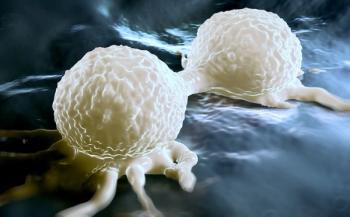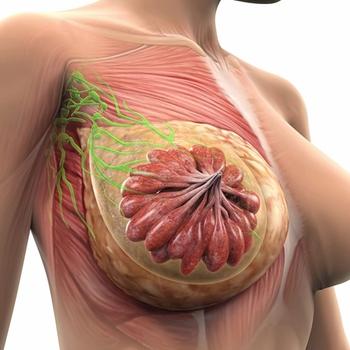
Oncology NEWS International
- Oncology NEWS International Vol 4 No 6
- Volume 4
- Issue 6
Outpatient ABMT at Duke Leads to Savings
NEW ORLEANS--Since Duke University moved part of its autologous bone marrow transplantation (ABMT) service to an outpatient setting, "the hospital has saved bundles, and the patients couldn't be happier," William Peters, MD, director of bone marrow transplantation and professor of medicine, told reporters at the American Cancer Society Science Writers Seminar.
NEW ORLEANS--Since Duke University moved part of its autologousbone marrow transplantation (ABMT) service to an outpatient setting,"the hospital has saved bundles, and the patients couldn'tbe happier," William Peters, MD, director of bone marrowtransplantation and professor of medicine, told reporters at theAmerican Cancer Society Science Writers Seminar.
The high cost of bone marrow transplant is largely due to theextended hospitalization, he said, so when you reduce this factorby using an intensive outpatient clinic instead, the savings mount.
More than 350 breast cancer patients at Duke have received high-dosechemotherapy as inpatients, then have undergone ABMT as outpatients,staying in a neighboring hotel where they are minutes away fromclinic appointments and emergency care, Dr. Peters said.
The patient, by protocol, has a caregiver with her, but thereare no medical personnel on the hotel premises. The "rapidreadmission" capability is the key to making this work. Thehospital reserves one bed for every eight outpatients, so emergencyadmissions are possible.
Of the first 295 patients, about 95% were discharged soon afterchemotherapy, and 68% of these women were subsequently managedalmost totally as outpatients. Readmission was never requiredfor 47%, and 21% required brief hospital admissions of less than24 hours, primarily for acute management of febrile neu-tropenia.The main reason for readmis-sion after initial chemotherapy wasfever.
The outpatient management approach has reduced the average numberof hospital days from 25 to 8. This directly affects treatmentcost, since hospitalization runs $1,945 per day, compared withthe daily hotel room rate of $55, Dr. Peters said.
The patients have been universally in favor of the change. "Insurveys, almost all the women have referred to the hospital stayas some sort of prison. As outpatients, they have more freedom,more control, and more privacy," he said. "We thoughtthey would have some anxiety, but most had none at all."
Articles in this issue
over 30 years ago
IDEC-C2B8 Antibody Is in Phase III Testing for B-Cell Lymphomaover 30 years ago
Dr. Peters Named Head of the Michigan Cancer Foundationover 30 years ago
Broad-Spectrum Sunscreens Block UVA and UVBover 30 years ago
Trials of AccuSite Injectable Gel From Matrix Begin in Basal Cell Caover 30 years ago
Algorithm Optimizes Value of CA125 II Screening for Ovarian Caover 30 years ago
Better Ovarian Cancer Outcome With IP Cisplatinover 30 years ago
Epirubicin Effective But Toxicity Is Increasedover 30 years ago
Aggressive 16-Week Multidrug Regimen Improves Breast Cancer SurvivalNewsletter
Stay up to date on recent advances in the multidisciplinary approach to cancer.

















































































